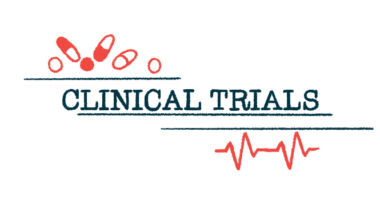NMOSD Relapses Common, Increase Healthcare Costs in US

Almost half of U.S. patients with neuromyelitis optica spectrum disorder (NMOSD) experienced relapses over a period of two years, according to an analysis of a large healthcare claims database.
Such relapses — which lasted on average nearly 13 days — were treated more often with outpatient rather than hospital care, the data showed.
But the findings of the analysis also showed that healthcare costs for people living with NMOSD were higher than for those without the disorder — and were similar to or more than what is paid by patients with other neurological autoimmune conditions.
In fact, the mean healthcare costs per year for NMOSD patients were some 580% higher than the cost of care for people without the progressive disease, the data showed. Researchers noted that “medicines that prevent relapses could lead to fewer relapse-associated hospitalizations and outpatient treatments.”
Thus, “therapies with the highest relapse risk reduction could lead to markedly lower relapse-associated healthcare utilization and clinical burden in patients with NMOSD,” the researchers concluded.
The study, “Neuromyelitis Optica Spectrum Disorder: Clinical Burden and Cost of Relapses and Disease-Related Care in US Clinical Practice,” was published in the journal Neurology and Therapy.
NMOSD is characterized by an altered immune attack on the spinal cord and/or the optic nerve that carries visual information from the eye to the brain.
People with NMOSD experience unpredictable and recurrent inflammatory attacks — or relapses — which can drive disease progression and lead to blindness, paralysis, and increased mortality rates. Relapses may require additional visits to the doctor or hospital, as well as additional pharmacy costs.
However, little is known about the real-world clinical and economic burden of NMOSD relapses in patients living in the U.S.
Thus, scientists at Alexion Pharmaceuticals, the company that markets the approved NMOSD therapy Soliris (eculizumab), and their colleagues set out to examine medical care utilization and expenditure for the disease, for any cause and during relapses.
“To the best of our knowledge, our study provides the first published evidence on the economic burden of NMOSD relapses and the management of patients with NMOSD in a peer-reviewed journal,” the team wrote.
Working with researchers at Harvard Medical School and the health-economic consultants Policy Analysis, the Alexion scientists used data from the large IQVIA PharMetrics Plus Healthcare Claims Database, taken between 2012 and 2019. The team extracted records from adults with NMOSD, and from a second group of adults without NMOSD — matched in age, sex, geographic region, and health plan type.
NMOSD relapses were defined by any admission to an acute care hospital for a relapse, or any medical visit to a doctor’s office, clinic, or hospital requiring treatment to reduce the levels of disease-causing antibodies. The treatments given included the immunosuppressive therapy methylprednisolone (at least two consecutive doses), or plasma exchange or intravenous (into-the-vein) immunoglobulin therapy.
The analysis included 1,363 eligible NMOSD patients, with a mean age of 44.9 years, of whom 75.3% were female. The most common NMOSD-associated conditions were nerve pain, followed by bladder problems, paralysis, and low levels of thyroid hormones in the bloodstream, which is known as hypothyroidism.
Common co-existing conditions included high blood pressure (30.0%), then anxiety (19.5%), diabetes (12.8%), lung disease (11.7%), and conditions affecting blood vessels in the brain (10.6%).
Over a median follow-up period of two years, 47.7% of NMOSD patients were found to have had one or more relapses. Overall, the annual relapse rate was 0.8, with more relapses needing outpatient care over hospital care. On average, relapses lasted 12.8 days per year, but 17.4% of patients experienced relapses lasting at least 20 days.
The mean healthcare costs per year for NMOSD patients was $60,599, versus $8,912 for the control group. This represents a mean increase of $51,687 — a 580% jump — for NMOSD alone. The higher costs were due to more hospital admissions and longer hospital stays, as well as extra clinical visits and pharmacy prescriptions.
During the follow-up period, 35% of NMOSD relapses were treated by hospital admission. Of these, the mean relapse duration was 17.5 days, costing a mean of $25,250 per relapse. For outpatient clinical care, relapses lasted for a mean of 15.9 days, with a corresponding mean cost of $4,550 per relapse.
Per patient, the mean cost of NMOSD relapses was $10,070 each year. As expected, more relapses led to higher healthcare costs – patients with one or fewer relapses per year had a mean care expense of $4,248, whereas those with three or more relapses per year (5.9%) had a mean care cost of more than $83,000.
“Our findings suggest that relapses are common in patients with NMOSD and that a subset of severely affected patients (those with three or more relapses) account for a disproportionate burden of disease,” the researchers wrote.
“Our estimates … suggest that the economic burden of NMOSD is comparable with, and may be higher than, the economic burden of other [brain and spinal cord] disorders,” they wrote.
Overall, the analysis, using the U.S. commercial claims data, “indicate that relapses among patients with NMOSD are common in clinical practice,” the team concluded.







